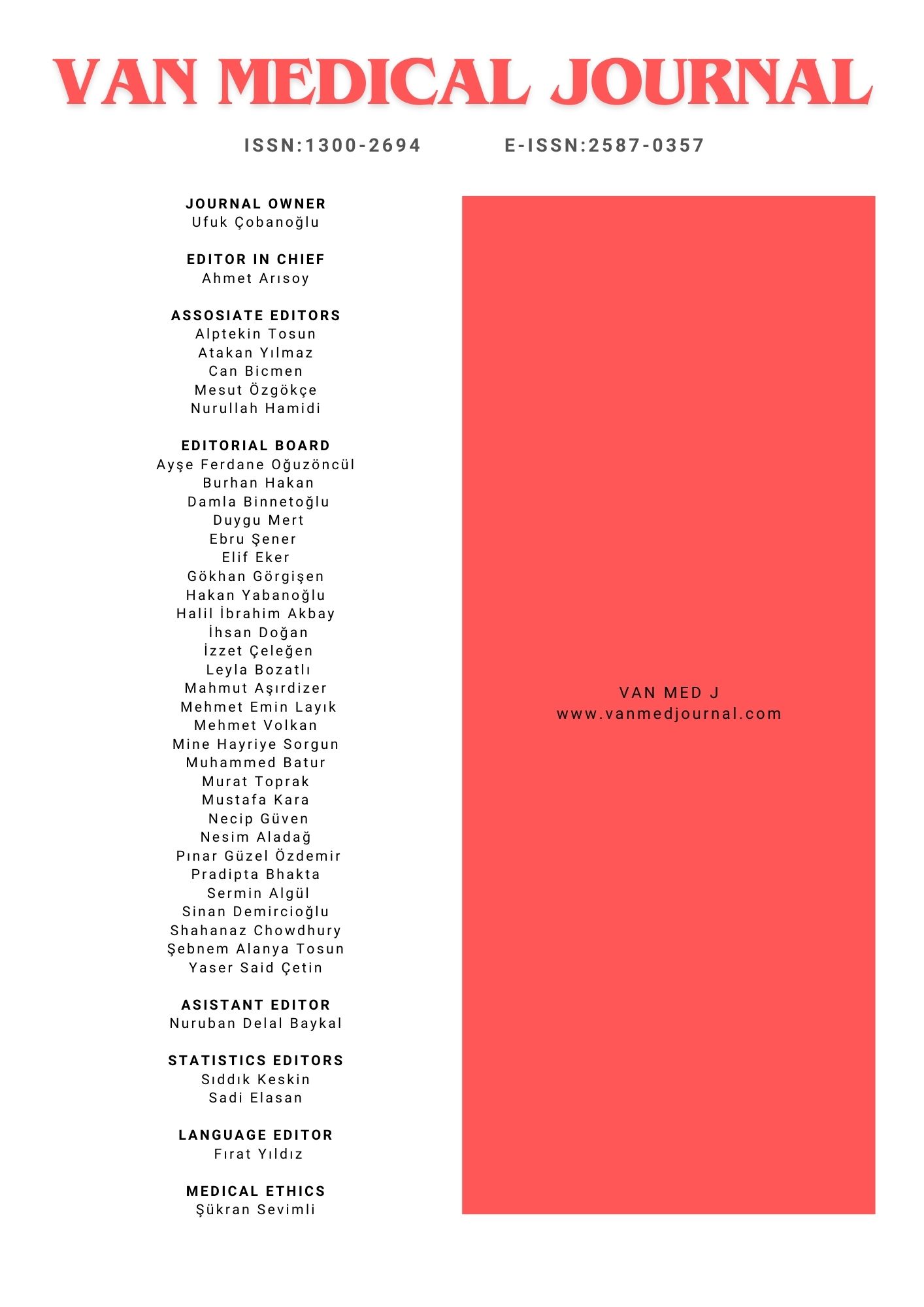Functional and Radiological Out Comes of Patients With Full-Thickness Rotator Cuff Tears Repaired By arthroscopic Knotted-Suture Bridge Double Row Method
Erkan Akgün1, Hüseyin Emre Tepedelenlioglu1, Demet Pepele Kurdal2, Cihan Adanaş3, Ahmet Onur Akpolat11Etlik City Hospital, Orthopedics Surgery and Traumatology Department, Ankara, Turkey2University of Health Science, Fatih Sultan Mehmet Training and Research Hospital, Orthopedics Surgery and Traumatology Department, İstanbul, Turkey
3Van Yüzüncü Yıl University, Faculty of Medicine, Orthopedics Surgery and Traumatology Department, Ankara, Turkey
INTRODUCTION: To evaluate the functional and radiological results of double-row arthroscopic rotator cuff repairs performed by the Knotted Suture Bridging method.
METHODS: The study included 36 patients. Before surgery, tear type, tear size, and muscle atrophy were examined by ultrasound (USG) and magnetic resonance imaging (MRI) in all patients. In the clinical evaluation, the preoperative and postoperative 2nd year results of the patients were compared by Visual Analogue Scale (VAS), scoring the University of California, Los Angeles (UCLA) and the shoulder index scoring of the American Shoulder and Elbow Surgeons (ASES). Sugaya MRI recovery analysis was used to evaluate the structural healing of the tendon.
RESULTS: A significant decrease was found in the patients' VAS scores in the postoperative period. While the preoperative UCLA (0-35) score was 19.1, the median value in the second postoperative year was 29.7. (p<0.001). The median preoperative ASES index (0-100) was 46.7 before and 85 after surgery. (p<0.001) Both scores show a significant improvement in patients in the second postoperative year. MRI imaging showed good rotator cuff healing in 29 patients (Sugaya type 1-2), Sugaya type 3 in 2 patients, type 4 lesions in 2 patients, and type 5 in 3 patients.
DISCUSSION AND CONCLUSION: Double-row arthroscopic rotator cuff repairs performed by the Knotted Suture Bridging method in medium and large rotator cuff tears are highly effective in the tendon's functional and adhesive healing.
Corresponding Author: Ahmet Onur Akpolat, Türkiye
Manuscript Language: English

